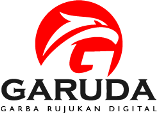Author Guidelines
General Author Guidelines
Articles submitted for publication must meet the following conditions:
The article is typed in double spacing and the length of writing is about 35,000 characters or 25 pages of A4 paper. To review a long book of 20,000 characters or 15 pages of A4 paper.
Writing organizations include: 1) title, 2) author's name (without title), 3) author's agency, 4) abstract in English and Indonesian of around 200-250 words, 5) keywords, 6) introduction, 7) discussion, 8) conclusion 9) cover, and 9) bibliography. For scientific (research) articles, numbers (1) to (6) are the same as above, number 7) problem formulation, 8) aims and contributions, 9) literary studies and theoretical framework, 10) methods, 12) discussion and Findings, 13) cover, and 14) bibliography.
The full name of the author should be included along with the origin of the university or professional institution, complete address, and e-mail address that can be contacted. Also include two biographical sentences of the author (updated information) that can be used in your article.
The quotation of the entire bibliography is written with a body note or inclusive note model, in order of: 1) open parenthesis, 2) author's final name, 2) coma, 3) year, 4) colon, 5) the quoted page, and 6) parentheses Closed. Example: (Siregar, 2004: 12) or (siregar, 2014) for citation of global idea of refrence.
Include a bibliography at the end of your article, following the example as follows:
Sample book: Mahmood, Tahir. Family Law in Islamic Contries; History, Text and Comparative Analisys. New Delhi: Academy of Law and Religion, 1987.
Example of a journal article: Ali, Muhammad Mumtaz. "The Concept of
Modernization: An Analysis of Contemporary Islamic Thought", in The
American Journal of Islamic Social Sciences Vol. 14, No.1 (Spring 2001): p. 13-26.
It is suggested the use of a reference manager, MENDELEY and ZOTERO
The order of the bibliography is written alphabetically.
Transliteration Arab-Latin follow the guidelines of transliteration. Download.
Template for Preparing Manuscript for Journal of Indonesian Law. Download.
For more information please contact 08562814880 (Ahmadi) or via email: journalofindonesianlaw@gmail.com
Reviewing of Manuscripts
Every submitted paper is independently reviewed by at least one peer-reviewer. The decision for publication, amendment, or rejection is based upon their reports/recommendation. If single or more reviewers consider a manuscript unsuitable for publication in this journal, a statement explaining the basis for the decision will be sent to the authors within three months of the submission date.
Revision of Manuscripts
Manuscripts sent back to the authors for revision should be returned to the editor without delay. Revised manuscripts can be sent to editorial office through the Online Submission Interface. The revised manuscripts returned later than three months will be considered as new submissions.
Tables and Figures
Tables are sequentially numbered with the table title and number above the table. Tables should be centered in the column OR on the page. Tables should be followed by a line space (12pt). Elements of a table should be single-spaced. However, double spacing can be used to show groupings of data or to separate parts within the table. Table headings should be in 10pt bold. Tables are referred in the text by the table number, e.g., Table 1. Do not show the vertical line in the table. There is only horizontal line should be shown in the table.
Figures should, preferably, be included in the electronic version of the manuscript in an appropiate format as follows; JPG, PNG.
Manuscript Heading, Font, and Spacing
The manuscript should be typed using word processors (Microsoft Word, Open Office, Rich Text Format, or WordPerfect document file format) software. The font used throughout the paper is Times New Roman. The paper size is A4 (i.e., 210 x297 mm), with a2.5 cmmargin at the top, a2.5 cmmargin at the bottom,2.5 cmmargin on the left, and2 cmmargin on the right. The text is single-spaced, justified, uses a 12-point font; employs italics, rather than underlining (except with URL addresses); and tables are placed within the text at the appropriate points, rather than at the end. Page numbers should be included in the text located in the footer section of each page. Use of pronouns such as I, we, etc. should be avoided. Arabic words should be transliterated according to the style of Journal of Indonesian Law.
When submitting a manuscript, the author guarantees that the same manuscript or a similar version has not been submitted to any other journal or publication. Submissions must be accompanied by footnotes, and must also be accompanied by a full bibliography of works cited in the text. Spelling, capitalization, and punctuation must be consistent within each article.
Manuscript submitted to this journal should follow the heading below, except for the review article: Title; Authors Name; Authors Affiliation; The E-mail Address; Abstract; Keywords; Introduction; Discussion; Conclusion; Acknowledgments; and References.
Authors Name and Affiliations
Write Author(s) names without a title and professional positions such as Prof, Dr, etc. Do not abbreviate your last/family name. Always give your full name. Write clear affiliation of all Authors.
Author names should be in 12 pt Times New Roman bold with 12 pts above and 12 pts below. Author affiliations should be in 12 pt Times New Roman
Paper Title
The title should reflect a specific focus of study based on the main issue of the article so that the author can get a general statement and sub-title specifically confining the scope of study. In addition, the title should be precise.
The title should be in 12 pt bold Times New Roman and be centered. The title should have 0 pts space above and 12 pts below.
Abstract and Keywords
An abstract looks like an advertisement of the article. The reader will continue reading all the article if he is interested in its abstract. Thus, the abstract should tell the prospective reader what the writer did and highlight the key findings. Avoid using uncommon abbreviations. The abstract must be accurate, brief, clear, precise, honest and specific. Use words which reflect the precise meaning. Please consider word limitations (200-250 words).
Keywords are the labels of your article and are helpful for the indexing and searching. Therefore the keywords should represent the content and highlight of the article. Use the words which only focus on your article. Each word/phrase in keyword should be separated by a comma (,).
Introduction
In Introduction, authors should state the objectives of the work at the end of introduction section. Before the objective, authors should provide an adequate background, and short literature survey in order to record the existing solutions, to show the differences from previous researches, to show the main limitation of the previous researches, to show what you want to achieve or solve the limitation, to show the novelties of the paper, and to show theoretical construct (if needed) of the research. At the end, if the articles are results of a research, authors should state the methods used.
Discussion
Discussions should explore the meaning of the article. The discussion is the most important part of your article. Here you get a chance to sell your data. Discussions could begin with a brief summary of the scientific findings from previous researcher’s authors should explore things that relate to the objectives of the work and give a scientific interpretation and reasons for each of the results or findings presented.
Conclusions
The conclusion should answer the research objectives clearly. Tells how your work will find a theory of knowledge. Without a clear conclusion, reviewers and readers will find it difficult to assess the benefits of your work. Do not restate the abstract, or just list from analysis.
References
Bibliography at the end of an article, following the example as follows:
Book:
Mahmood, Tahir. Family Law in Islamic Contries; History, Textand Comparative Analisys. New Delhi: Academy of Law and Religion, 1987.
Journal article:
Ali, Muhammad Mumtaz. "The Concept of Modernization: An Analysis of Contemporary Islamic Thought", in The American Journal of Islamic Social Sciences Vol. 14, No.1 (Spring 2001): p.13-26.



